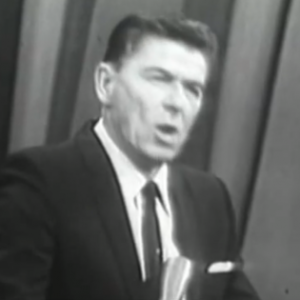Thirty-seven years ago Ronald Reagan signed the tax cut that provided the centerpiece for his election campaign. This measure reduced tax rates by an average of 25 percent, with the top tax rate lowered from 70 percent to 50 percent.
Five years later, Reagan was back with another round of tax cuts. This lowered the top rate further to 28 percent. The 1986 tax cut also featured a big reduction in the corporate tax rate, lowering it from 46 percent to 35 percent.
In both cases, especially the first tax cut, the bulk of the immediate benefits went to higher income households. This was hardly a secret; anyone could see the rich were getting the biggest cuts in tax rates. Also, when corporations get a tax cut, the shareholders, who are overwhelmingly wealthy, get the biggest immediate benefit.
But, the tax cuts were justified with the argument that putting money in the hands of the wealthy would benefit everyone since they would save and invest more, leading to more jobs, growth and higher wages. They also argued that the additional growth would pay for the tax cut.
On the last point, the evidence is rock solid. There was no huge boost to growth. In fact, growth for the decade of the 1980s was actually a hair slower than it had been for the decade of the 1970s, averaging 3.1 percent annually in the 1980s compared to 3.2 percent in the 1970s.
Revenue fell sharply relative to the size of the economy, and the deficit exploded. Deficits went from averaging just over 2 percent of GDP in the three years preceding the 1981 cut to an average of almost 5 percent of GDP ($1 trillion annually in today’s economy) in the years 1984-1986, after the economy had recovered from the recession.
Nonetheless, people care more about their pocketbooks than the size of the budget deficit, but here also the tax cuts didn’t come through as promised. In fact, the outcome was pretty much the reverse of the happy story promised by Reagan.
Instead of leading to a boom, investment spending fell from a post-World War II peak of 15.4 percent of GDP in 1981 to less than 13 percent of GDP in the mid- and late-1980s. The weak levels of investment went along with weak productivity growth. The productivity slowdown that began in the mid-1970s continued through the 1980s.
More important, workers did not get their share of even this modest productivity growth. After adjusting for changes in purchasing power, the wage of a typical worker was 1 percent lower in 1989 than it had been in 1979.
The story looks even worse for less-educated workers. While women with just a high school degree were able to tread water, with their wages holding constant over the decade, men with just a high school degree saw a 12.5 percent reduction in their hourly wage. That is a very large hit to a group that was almost two-thirds of male workers at the time of the first tax cut.
The Reagan tax cuts certainly can’t be blamed for everything bad that happened to workers in the 1980s. The Reagan administration pursued an explicitly anti-union policy that was designed to reduce union membership and weaken the power of unions where they existed. It also refused to raise the minimum wage, allowing inflation to reduce its purchasing power by close to a third by the end of the decade.
These and other Reagan administration policies also had the effect of reducing workers’ bargaining power and putting downward pressure on wages.
But, there are always complicating factors in economics. While it is arguable that the pre-Reagan tax rates were too high and were leading people to waste resources in tax avoidance and evasion, the economic gains from reducing rates were obviously limited.
In terms of producing a surge of investment, growth and wages, the tax cuts clearly came up short. And, they certainly did not pay for themselves, as the budget deficit exploded. Of course, if the point was to give more money to the richest people in the country, the Reagan tax cuts were a huge success.

